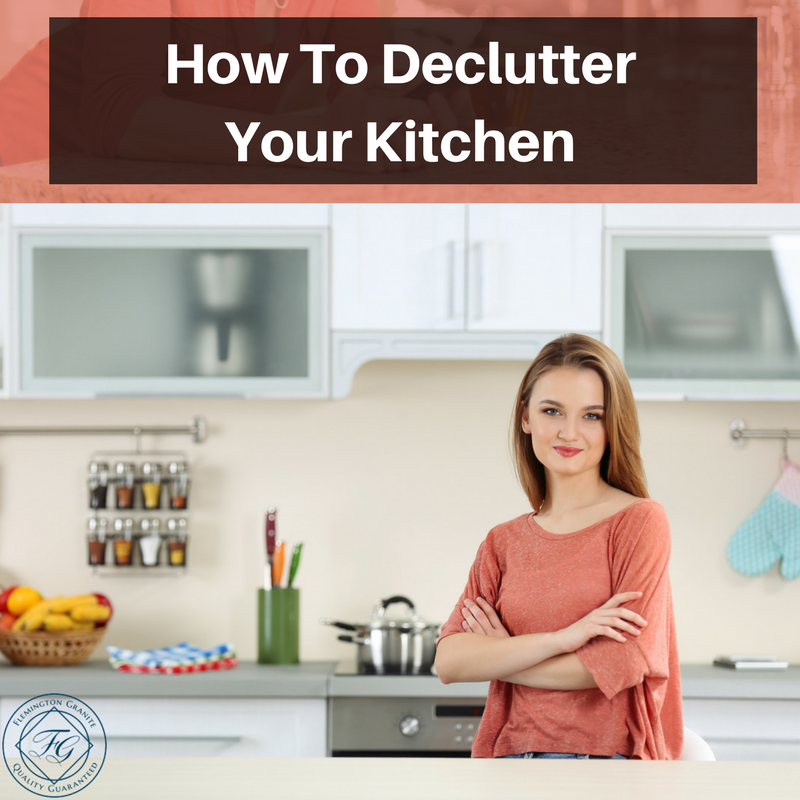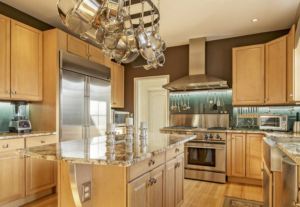
You’re looking at your kitchen counters, drawers and cabinets and thinking to yourself, what am I going to do to stop this endless clutter surrounding me on any given day? There’s mail piling up on one end of the counter, dishes are in a drainer inside the sink, and pots, pans and dishes are pushing up against already bulging cabinets, plus the drawers are overstuffed with coupons, utensils, change and everything else under the sun.
What do you do to alleviate this never ending nightmare of clutter and free up desperately needed space for what your kitchen was meant to be? Preparing meals and snacks and getting in and out of cabinets and drawers in an easy manner should be the goals behind any functioning kitchen, but how do you make a clean start?
Answers to the Clutter Dilemma
There are answers to the kitchen clutter dilemma, and it can be achieved by simply emptying, purging, reorganizing and utilizing kitchen organizational hardware, such as inside shelving units, racks and other stackable containers that can make decluttering and rearranging a kitchen a much simpler and less stressful process.
Cabinets and Drawers
Decluttering should start with emptying out each and every kitchen cabinet and drawer. In order to alleviate that overwhelming feeling of clearing a cluttered cabinet or drawer, slowly initiate the process one cabinet and drawer at a time. Take a look at what has been removed and determine what is no longer needed, useful or just plain worn out and nonfunctional.
Excesses
If you find yourself with an excess of dinnerware settings, glasses, cups, tableware, canisters, jars, tea towels, plastic ware, food storage containers and small appliances, and anything else that is worthy of donating or recycling, pack them up and drop them off at thrift shops, shelters, charities or recycling bins. There is always the thought of a yard sale as well. Don’t feel guilty about getting rid of excess, or throwing away anything that is truly worn out and unusable. Many of these items are easily replaced if the need arises.
Designated Areas
Once the clearing and purging process is completed, store essential and basic items in clean cabinets and drawers where they can be easily accessed. For example, place cups, glasses, plates, tableware and utensils in cabinets and drawers in the vicinity of the dishwasher (or sink) and the oven area where both cooking, cleaning/washing and serving occur. Put mugs in a cabinet near the coffee maker or teakettle. If your kitchen has an island, and it is close to the dishwasher and stove, use the shelving and drawers there to store any of these items that require immediate access.
In storing any of these items, such as utensils, use drawer inset dividers to isolate knives, gadgets, and other kitchen utensils in a neat and compact way. The same is true for cabinets. Find varying sizes of racks, dividers and stackable shelving for compartmentalizing almost anything from dishes and pans to frequently used appliances.
Cookware Decluttering
Like other kitchen items that create clutter, pots and pans that are rusty, scratched, mismatched or worn out should be discarded or recycled. Again, keep the essentials that are consistently used, say three or four graduated pan sizes and lids, including skillets and matching lids.
If an overhead baker’s rack is nonexistent, then find sturdy plastic racks for placing pans in vertical positions within cabinets that are in the general vicinity of the oven. This makes for compact storage and quick and quiet access as well as direct connection with stove top and oven use.
Kitchen Counter Clutter
To rid kitchen counters of extraneous items and clutter, take a plastic container or box, and remove everything from the counters that doesn’t belong there or is unnecessary. Find where the excess belongs throughout the house or get rid of it altogether, like junk mail or broken toys.
For any remaining items that need to stay in the counter area, find a cabinet or drawer and organize it with either a partitioned drawer organizer or stair step type of cabinet organizer and put the incidental items in or on them. Also, use baskets, plastic bins or other receptacles to store countertop clutter that is eventually going to be tossed or placed elsewhere.
Tops of Counters
When a kitchen pantry is not available for food storage, keep the most utilized staples,like sugar, flour, coffee, salt, pasta and other consistently used food and basic baking essentials in sealed glass or ceramic containers on the counter area. Label them with decorative labels that can be changed out if necessary. Glass or see-through containers make for easier retrieval, plus they bring character and a decorative look to a counter area.
Everyday utensils like spatulas, serving spoons, frequently used knives, hand can openers, scoops, whisks, wooden spoons and other items can be stored in stoneware containers on a counter-top as well, for easy access and a decorative aspect.
The Refrigerator
Decluttering a refrigerator is everyone’s least favorite project, but it doesn’t have to be if foods past their expiration dates are tossed when they should be. Eliminate anything in a freezer that is dated beyond a year or items that are covered in icy crystals or frost.
In the refrigerator itself, get rid of anything that has reached its expiration date as well as moldy, wilted or leftover items. Check any condiments for drying, putrid smells or anything that smacks of “discard me quickly.”
Once everything has been discarded, and the refrigerator is vacant, clean the refrigerator and drawers and designate areas within the refrigerator for drinks, snacks and leftovers.
The Pantry
If you have a pantry, get rid of ground spices and other related items that are older than six months and if you use whole spices, they should be tossed after a year. Any dry goods and other pantry foods should be given six months for storage. Once you have evaluated the dates of various pantry foods, group the foods on the shelves by canned goods, pastas, rice, packaged foods and mixes, baking supplies and any other foods that should be separated. Also, if extended shelving is available in a pantry area, store larger kitchen appliances, serving pieces and cookbooks there for easy retrieval.
If you have further questions on how to declutter your kitchen area and make it more accessible, complete the online contact form and a knowledgeable representative will get back to you with the answers you need to end your clutter worries.






